-
 Bitcoin
Bitcoin $108,489.6704
1.13% -
 Ethereum
Ethereum $2,502.0528
2.92% -
 Tether USDt
Tether USDt $1.0002
0.00% -
 XRP
XRP $2.1941
0.51% -
 BNB
BNB $655.3375
1.00% -
 Solana
Solana $151.5977
1.27% -
 USDC
USDC $0.9999
0.00% -
 TRON
TRON $0.2768
0.32% -
 Dogecoin
Dogecoin $0.1676
2.86% -
 Cardano
Cardano $0.5675
0.98% -
 Hyperliquid
Hyperliquid $40.6109
7.48% -
 Bitcoin Cash
Bitcoin Cash $500.7746
2.09% -
 Sui
Sui $2.8328
2.03% -
 Chainlink
Chainlink $13.4452
1.26% -
 UNUS SED LEO
UNUS SED LEO $9.1623
0.39% -
 Avalanche
Avalanche $18.2267
2.24% -
 Stellar
Stellar $0.2382
0.00% -
 Toncoin
Toncoin $2.8885
1.68% -
 Shiba Inu
Shiba Inu $0.0...01159
0.91% -
 Litecoin
Litecoin $87.1827
0.88% -
 Hedera
Hedera $0.1511
2.90% -
 Monero
Monero $315.4992
-0.59% -
 Polkadot
Polkadot $3.4663
2.34% -
 Bitget Token
Bitget Token $4.6118
-0.65% -
 Dai
Dai $1.0000
-0.01% -
 Ethena USDe
Ethena USDe $1.0003
0.02% -
 Uniswap
Uniswap $7.2989
4.69% -
 Pepe
Pepe $0.0...01003
5.73% -
 Aave
Aave $275.5616
7.15% -
 Pi
Pi $0.5181
-2.49%
What to do after the long Yin with large volume breaks the platform?
A long Yin with large volume breaking a platform signals strong bearish momentum, suggesting institutional selling and potential trend reversal.
Jun 30, 2025 at 03:07 pm
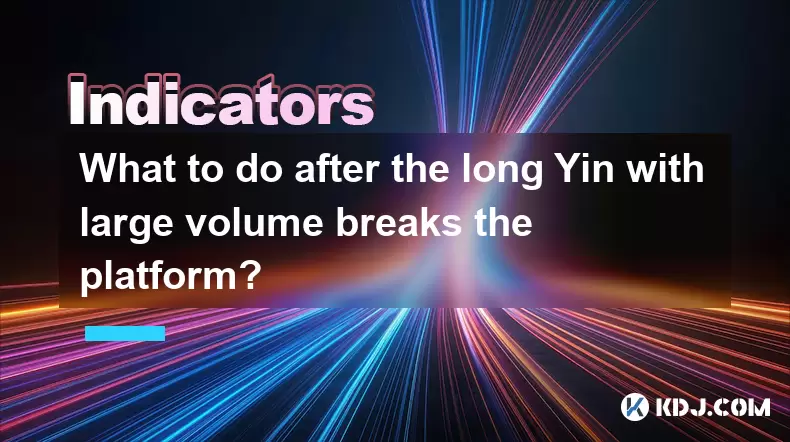
Understanding the Long Yin with Large Volume Pattern
A long Yin refers to a candlestick pattern where the price opens higher but closes significantly lower, forming a long red (or bearish) candle. When this occurs alongside large trading volume, it signals strong selling pressure and a potential shift in market sentiment. If this pattern breaks a previously established platform — which is a period of consolidation or sideways movement — traders must be cautious as it may indicate the start of a downtrend.
The key elements to consider are:
- The length of the bearish candle
- The increase in volume compared to previous candles
- The breaking of a well-defined support level or consolidation zone
This combination often suggests that institutional players or large holders are dumping their positions, leading retail investors to panic and sell off as well.
Assessing Market Context Before Taking Action
Before reacting to a long Yin with large volume breaking a platform, it's essential to evaluate the broader market environment. Key factors include:
- Whether the asset was overbought before the breakdown
- The presence of any macroeconomic news or regulatory updates affecting the cryptocurrency space
- Correlation with major cryptocurrencies like Bitcoin or Ethereum
For example, if Bitcoin experiences a similar pattern, it could drag down altcoins even if they were performing well individually. Conversely, if only one altcoin is showing this pattern while the rest of the market remains stable, the issue might be specific to that project, such as negative developments or loss of investor confidence.
Technical Analysis: Confirming the Breakdown
To confirm whether the breakout is genuine, traders should use technical indicators and tools such as:
- Moving Averages: Check if the price has broken below key moving averages like the 50-day or 200-day MA.
- Volume Profile: Analyze if the volume during the long Yin exceeds average volumes by a significant margin.
- Support and Resistance Levels: Identify previous support zones that have now been breached and turned into resistance.
One effective method is to draw trendlines connecting the lowest points of the consolidation phase. Once these lines are decisively broken and not retested successfully, it confirms the platform break.
Another useful tool is the Relative Strength Index (RSI). If RSI drops below 30 after the breakdown, it indicates oversold conditions, potentially offering a short-term bounce. However, if RSI stays between 40 and 50 without rising above 50, it suggests weak buying interest.
Risk Management Strategies Post-Breakdown
After identifying a long Yin with large volume breaking a platform, risk management becomes crucial. Here’s how traders can protect themselves:
- Stop-loss placement: Set stop-loss orders just above the high of the long Yin candle to limit potential losses if the price reverses.
- Position sizing: Reduce exposure by lowering position sizes, especially if the breakdown is on high volume and no immediate support levels are visible.
- Portfolio rebalancing: Consider reallocating capital to more stable assets within the portfolio or moving to cash until the trend stabilizes.
Traders who held long positions before the breakdown should reassess their strategies. Holding through a breakdown without a plan can lead to significant losses. It’s also important to avoid averaging down unless there’s clear evidence of a reversal or accumulation phase.
Trading Opportunities After the Platform Breaks
While a breakdown is generally bearish, experienced traders can find opportunities in both directions depending on the context:
- Short-selling: Enter short positions once the breakdown is confirmed and volume sustains the downward move. Use previous consolidation highs as targets for take-profit levels.
- Bounce plays: In some cases, after a sharp drop, the price may retest the broken platform as resistance. This offers an opportunity to enter short positions with tighter stop-losses.
- Wait-and-watch approach: For conservative traders, waiting for a new trend to form or for the price to stabilize near a new support level can provide better entry points.
Using order types like limit orders and conditional orders can help automate entries and exits based on predefined criteria. Additionally, monitoring on-chain data, such as exchange inflows and outflows, can provide insights into whether the selling pressure is likely to continue.
Frequently Asked Questions
Q: What does "platform" mean in crypto chart analysis?
In technical analysis, a platform refers to a period of consolidation where the price moves sideways within a narrow range. It typically forms after an uptrend or downtrend and represents a pause in the market before a potential continuation or reversal.
Q: Can a long Yin with large volume ever be a bullish signal?
Although rare, a long Yin with large volume can sometimes indicate a bullish reversal if it appears at the end of a prolonged downtrend. This could suggest capitulation selling followed by institutional buying. However, confirmation from subsequent candles and volume patterns is necessary.
Q: How do I differentiate between a healthy pullback and a platform breakdown?
A healthy pullback usually sees decreasing volume and limited downside beyond key support levels. In contrast, a platform breakdown is marked by increasing volume, aggressive price action below support, and failure to re-enter the consolidation zone.
Q: Should I close all my positions immediately when a platform breaks?
Not necessarily. Evaluate the broader market, check supporting indicators, and assess your personal risk tolerance. Some traders may choose to partially exit while keeping a portion for potential rebounds or further downside.
Disclaimer:info@kdj.com
The information provided is not trading advice. kdj.com does not assume any responsibility for any investments made based on the information provided in this article. Cryptocurrencies are highly volatile and it is highly recommended that you invest with caution after thorough research!
If you believe that the content used on this website infringes your copyright, please contact us immediately (info@kdj.com) and we will delete it promptly.
- Bitcoin's Bumpy Ride: Profit-Taking Slows Momentum, What's Next?
- 2025-06-30 20:30:11
- Bitcoin's Price Stall: Decoding the ETF Inflows Mystery
- 2025-06-30 20:30:11
- Ripple XRP, Bitcoin, and Solaris Presale: What's the Buzz?
- 2025-06-30 18:50:11
- SpaceX, Mirror Tokens, and Investors: A Wild Ride to the Future?
- 2025-06-30 19:10:22
- Arbitrum (ARB) and Robinhood: Partnership Rumors Fuel Price Surge to $0.4289?
- 2025-06-30 19:10:22
- Jasmy Coin, Bitcoin, and the Rise of Solaris Presale: What's the Buzz?
- 2025-06-30 18:30:12
Related knowledge
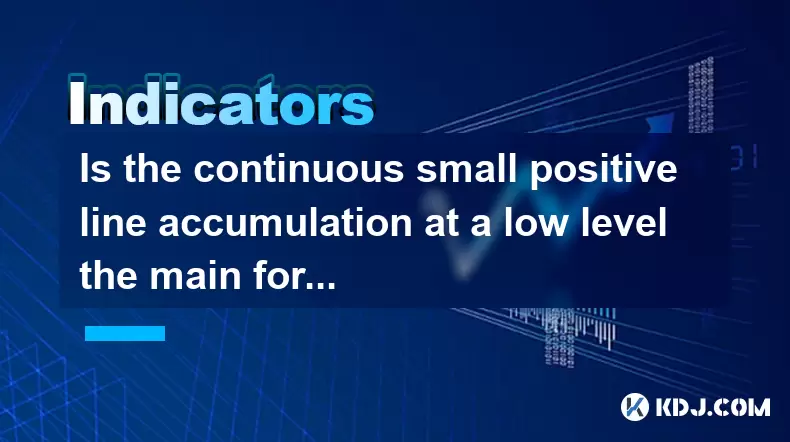
Is the continuous small positive line accumulation at a low level the main force to build a position?
Jun 30,2025 at 08:15pm
Understanding the Concept of Continuous Small Positive Line AccumulationIn cryptocurrency trading, continuous small positive line accumulation refers to a pattern where an asset experiences multiple consecutive candlesticks or bars that close higher than they open, but with relatively low volume and minimal price movement. This phenomenon is often obser...
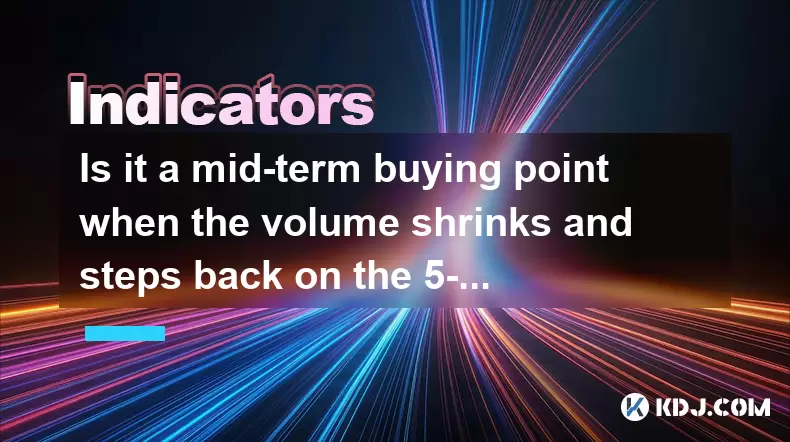
Is it a mid-term buying point when the volume shrinks and steps back on the 5-week line in the upward trend?
Jun 30,2025 at 07:49pm
Understanding the 5-Week Moving Average in Cryptocurrency TradingIn cryptocurrency trading, technical indicators such as the 5-week moving average are widely used to assess long-term trends. This indicator smooths out price volatility over a five-week period and provides traders with a clearer picture of the direction in which an asset is moving. When a...
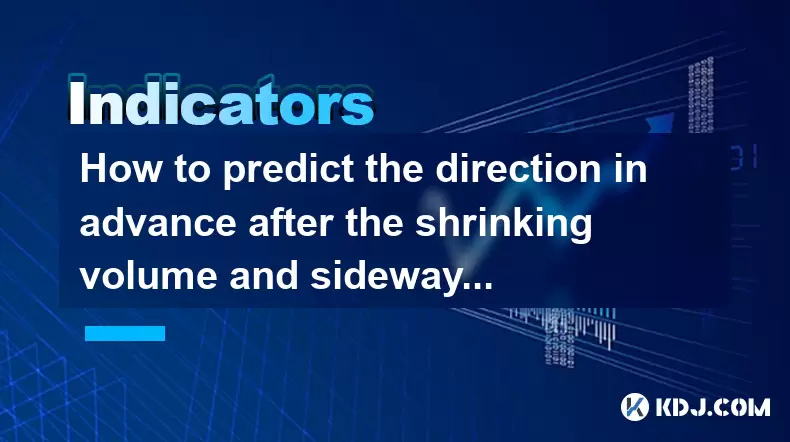
How to predict the direction in advance after the shrinking volume and sideways shock?
Jun 30,2025 at 08:57pm
Understanding Shrinking Volume and Sideways ShockIn the cryptocurrency market, shrinking volume refers to a period where trading activity significantly decreases. This often indicates a lack of interest or uncertainty among traders regarding the next price movement. Simultaneously, sideways shock occurs when the price moves within a narrow range without...
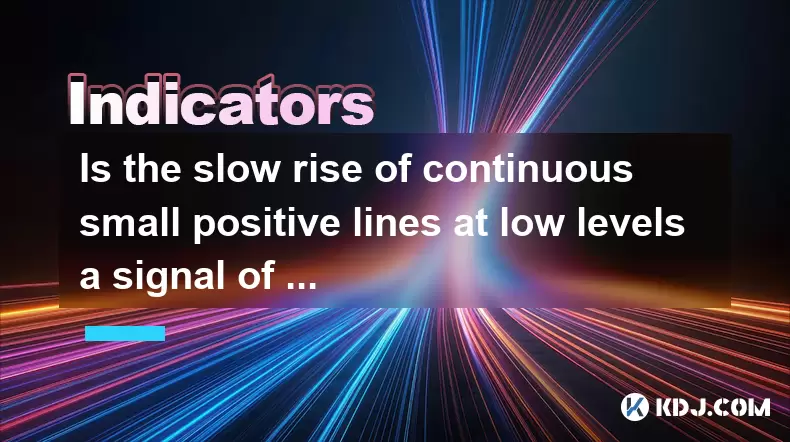
Is the slow rise of continuous small positive lines at low levels a signal of the main force absorbing funds?
Jun 30,2025 at 07:00pm
Understanding the Concept of Continuous Small Positive Lines in CryptocurrencyIn the realm of cryptocurrency trading, price patterns are often analyzed to predict future movements. One such pattern is the slow rise of continuous small positive lines at low levels, which refers to a situation where an asset’s price gradually increases over time through a...
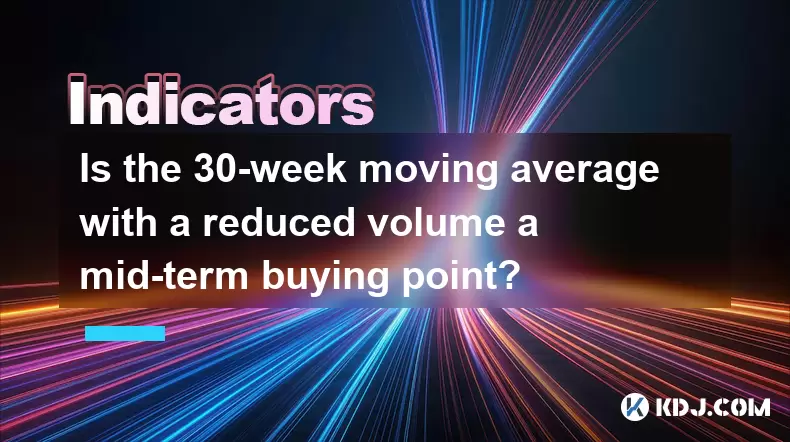
Is the 30-week moving average with a reduced volume a mid-term buying point?
Jun 30,2025 at 08:01pm
Understanding the 30-Week Moving Average in Cryptocurrency TradingThe 30-week moving average is a popular technical indicator used by traders to assess long-term trends in cryptocurrency markets. Unlike shorter timeframes such as the 50-day or 200-day moving averages, the 30-week version smooths out price data over a longer duration, reducing noise and ...
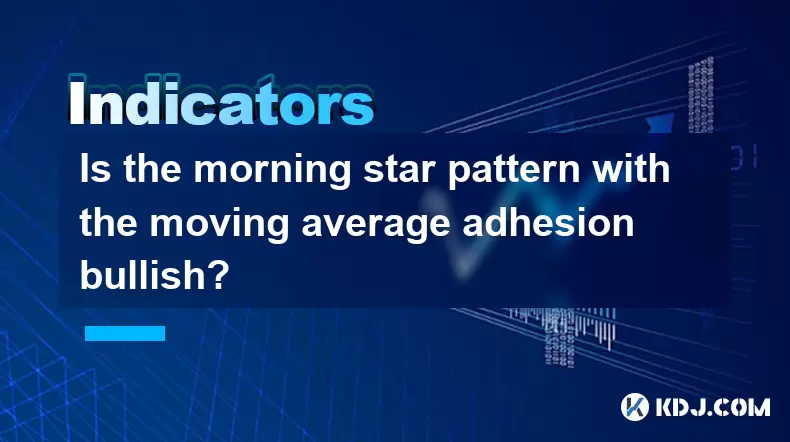
Is the morning star pattern with the moving average adhesion bullish?
Jun 30,2025 at 09:15pm
Understanding the Morning Star PatternThe morning star pattern is a widely recognized candlestick formation in technical analysis, especially within cryptocurrency trading. It typically signals a reversal from a downtrend to an uptrend. The structure of this pattern consists of three candles: a large bearish candle, followed by a small-bodied candle (or...

Is the continuous small positive line accumulation at a low level the main force to build a position?
Jun 30,2025 at 08:15pm
Understanding the Concept of Continuous Small Positive Line AccumulationIn cryptocurrency trading, continuous small positive line accumulation refers to a pattern where an asset experiences multiple consecutive candlesticks or bars that close higher than they open, but with relatively low volume and minimal price movement. This phenomenon is often obser...

Is it a mid-term buying point when the volume shrinks and steps back on the 5-week line in the upward trend?
Jun 30,2025 at 07:49pm
Understanding the 5-Week Moving Average in Cryptocurrency TradingIn cryptocurrency trading, technical indicators such as the 5-week moving average are widely used to assess long-term trends. This indicator smooths out price volatility over a five-week period and provides traders with a clearer picture of the direction in which an asset is moving. When a...

How to predict the direction in advance after the shrinking volume and sideways shock?
Jun 30,2025 at 08:57pm
Understanding Shrinking Volume and Sideways ShockIn the cryptocurrency market, shrinking volume refers to a period where trading activity significantly decreases. This often indicates a lack of interest or uncertainty among traders regarding the next price movement. Simultaneously, sideways shock occurs when the price moves within a narrow range without...

Is the slow rise of continuous small positive lines at low levels a signal of the main force absorbing funds?
Jun 30,2025 at 07:00pm
Understanding the Concept of Continuous Small Positive Lines in CryptocurrencyIn the realm of cryptocurrency trading, price patterns are often analyzed to predict future movements. One such pattern is the slow rise of continuous small positive lines at low levels, which refers to a situation where an asset’s price gradually increases over time through a...

Is the 30-week moving average with a reduced volume a mid-term buying point?
Jun 30,2025 at 08:01pm
Understanding the 30-Week Moving Average in Cryptocurrency TradingThe 30-week moving average is a popular technical indicator used by traders to assess long-term trends in cryptocurrency markets. Unlike shorter timeframes such as the 50-day or 200-day moving averages, the 30-week version smooths out price data over a longer duration, reducing noise and ...

Is the morning star pattern with the moving average adhesion bullish?
Jun 30,2025 at 09:15pm
Understanding the Morning Star PatternThe morning star pattern is a widely recognized candlestick formation in technical analysis, especially within cryptocurrency trading. It typically signals a reversal from a downtrend to an uptrend. The structure of this pattern consists of three candles: a large bearish candle, followed by a small-bodied candle (or...
See all articles

























































































